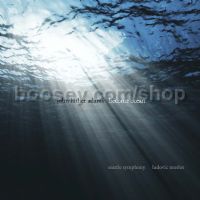Become Ocean (Cantaloupe Audio CD x2)
Become Ocean (Cantaloupe Audio CD x2)
* Estimated price converted from UK retail price
Awarded the 2014 Pulitzer Prize for Music and described by the New Yorker’s Alex Ross as “...the loveliest apocalypse in musical history”, John Luther Adams’ majestic orchestral work Become Ocean is a thrilling exploration of depth, turbulence, eerie silence and ultimately enveloping calm.
Performed by the Seattle Symphony under the baton of Ludovic Morlot, the music casts an expressive arc that’s by turns intimate and expansive - an ebbing and flowing sonic journey that finds the composer testing the very limits of his imagination.
“The title is stolen from John Cage”, Adams reveals, “from a little mesostic poem that he wrote in honor of Lou Harrison. He compares Lou’s music to a river in delta, with all these different influences and currents, coming together in a big beautiful sweep of music. And in the last line of the poem, Cage writes, ‘Listening to it, we become ocean.’ I’ve always been struck by what a beautiful image that is.”
Become Ocean premiered in Seattle in June 2013, and made its Carnegie Hall debut on May 6, 2014. In recent years, Adams has moved to fold natural processes into his approach to composing - the 'earth' element came through in particular with Cantaloupe Music’s release in 2013 of his open-air percussion piece Inuksuit.
Now with the 'water' element represented in Become Ocean (and with 'wind' being an integral force in his latest piece Sila), Adams continues to accentuate what he sees as the vital importance, especially in this modern age of irony and isolation, of connecting to something larger than ourselves.
Mixed and mastered for stereo and 5.1 surround sound, Become Ocean is a truly immersive experience that is meant to be felt at an emotional level. “What I want for you as a listener”, Adams explains, “is to be right in the middle of the orchestra. Become Ocean lends itself very well to putting you in the middle of this ocean of sound, with these three sections of the orchestra ebbing and flowing, rising and falling, crashing over and swirling around each other. It rumbles the floor and tickles your backbone, and at the same time, you feel the depth of the waves and the spray of the sea. That’s what I’m reaching for.”




